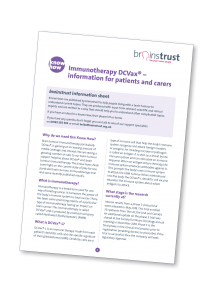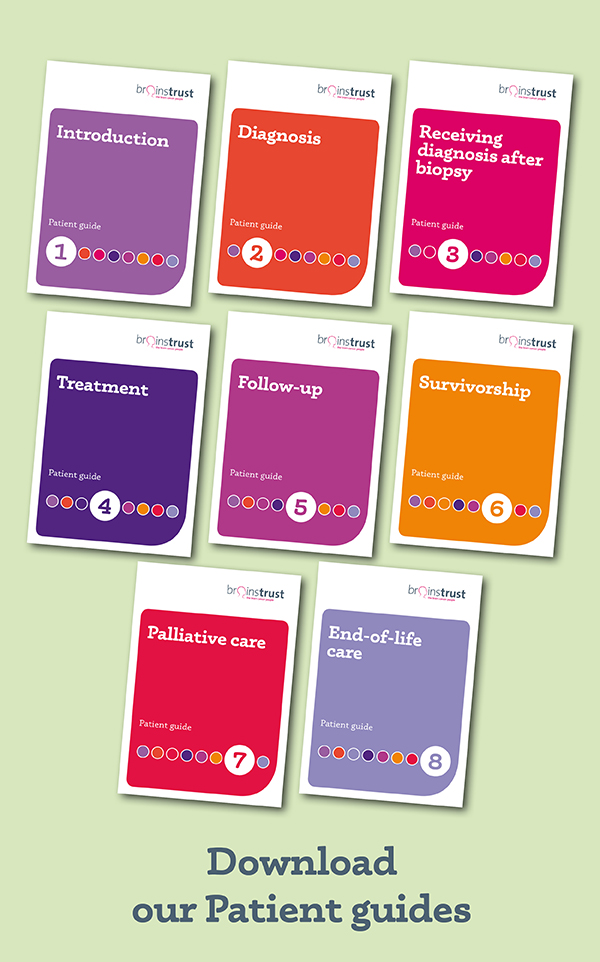Immunotherapy
Immunotherapy is often in the headlines, promising that it could give treatments the precision needed to be more effective in treating cancer, not just brain cancer but many other cancers too.
What does this mean for brain cancer?
Immunotherapy as a cancer treatment has waxed and waned since 1900. Current immunotherapies for brain cancer fall into six broad categories: cancer vaccines, checkpoint inhibitors, oncolytic virus therapy, adoptive cell therapy, adjuvant immunotherapies, and monoclonal antibodies. So there is much activity around this as a potential treatment. However, there are always caveats when there is a big media noise around ‘game changing’ treatments for cancer. Brain cancer is particularly challenging to treat due to the blood brain barrier (which is there to stop toxins getting into the brain) and there are so many different types of brain tumour. At the moment we know that there are several subsets of a glioblastoma brain tumour. It can work BUT it is hugely expensive as each treatment is personalised to each individual. And of course, not each individual will be responsive to the treatment, which can also be highly toxic. It is thought that if, at some point in the future, immunotherapy could be a potential treatment for brain cancer then it would probably only work in 10% of patients. And it comes with significant risk. When it goes wrong, it can go horribly wrong.
So what is the current state of play?
There are some trials but mostly these are phase 1 (so very early trials) and mostly in the USA so it is very expensive. And it isn’t just the finance. Sometimes the window for accessing these treatments is very tight and has to be before any other treatment. So timing is key. And even if these kinds of hurdles are overcome then the vaccine may not always be available. There are two routes to accessing immunotherapy. One is through a clinical trial and the other is privately. Best thing to do is to ask your clinical team about immunotherapy and clinical trials. More information about private clinics that offer immunotherapy can be found here.
If you want more information about clinical trials and how to access them visit this page.
So yes, this is promising for some brain cancer patients but we are a long way off seeing any real progress. This is not going to be a quick win, nor should it be. It is more important that it is right, than quick.
You can read more about immunotherapy in our Know How
Our resources have been designed to help you feel informed and on top of things, so you can make the right decisions for your care.
Did this information make you feel more resourced, more confident or more in control?
Date published: 17-05-2009
Last edited: 17-04-2025
Due for review: 05-04-2028








